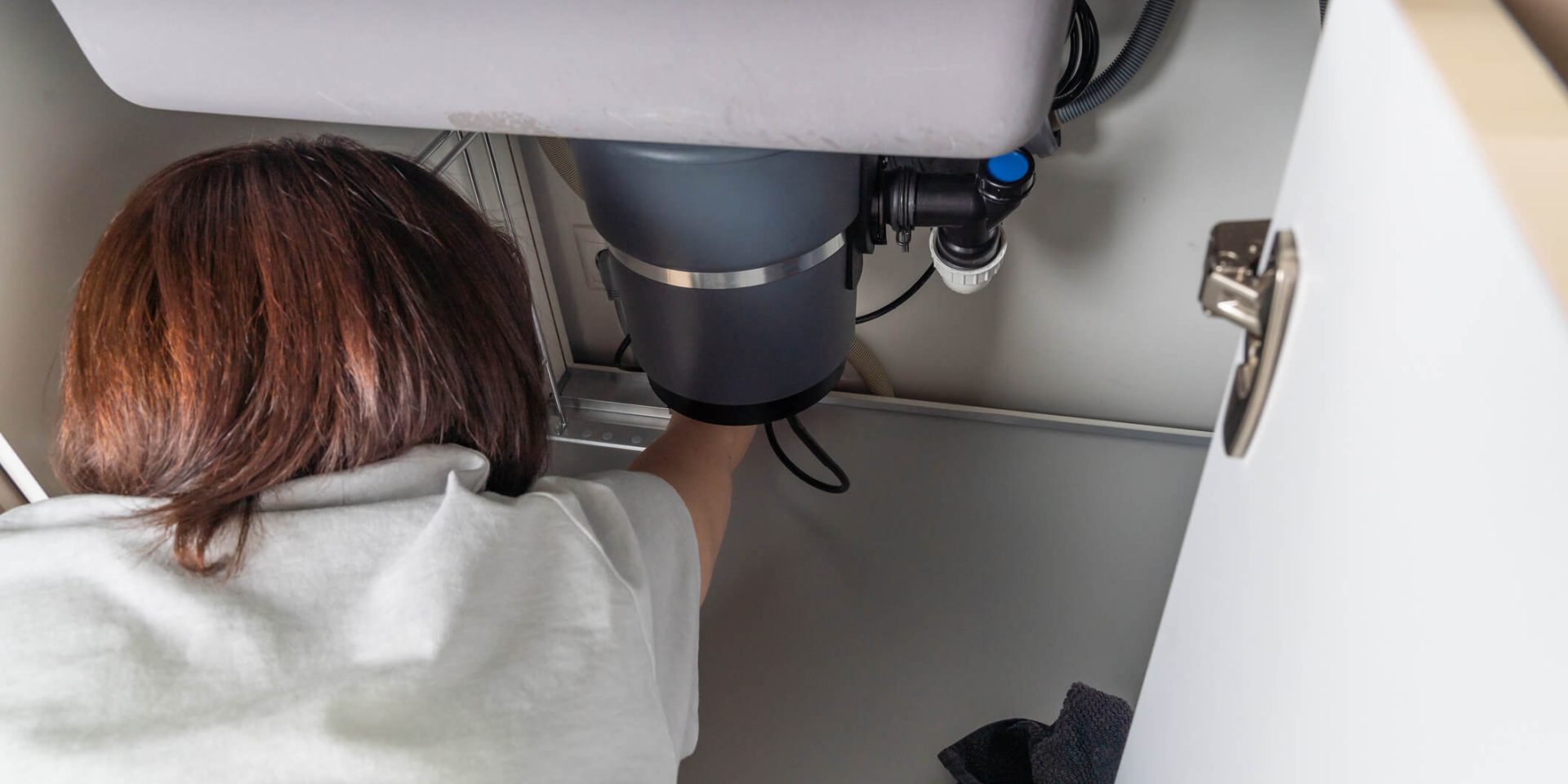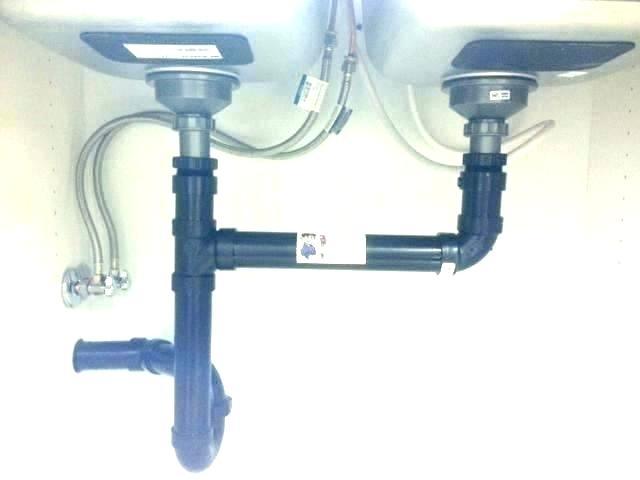Step-by-Step Instructions for Repairing a Leaky Waste Disposal
Step-by-Step Instructions for Repairing a Leaky Waste Disposal
Blog Article
This great article down below about Garbage Disposal Leaking From Bottom is unquestionably intriguing. Don't overlook it.

Waste disposal unit are necessary kitchen appliances that help in getting rid of food waste efficiently. Nonetheless, a dripping waste disposal unit can be an irritating and messy trouble to handle. The good news is, numerous leakages can be dealt with easily with a few basic actions. In this write-up, we will discuss exactly how to take care of a dripping waste disposal unit effectively.
Introduction
Garbage disposals are installed under kitchen sinks and are designed to shred food waste into smaller sized pieces, permitting it to travel through the plumbing system quickly. While these devices are normally reliable, leaks can happen with time due to wear and tear, loosened connections, or damages to the system.
Usual Reasons For Leaks in Rubbish Disposals
Worn Seals and Gaskets
Seals and gaskets play a critical role in preventing water from dripping out of the waste disposal unit. Over time, these components can weaken, bring about leaks around the disposal unit.
Loose Links
The connections in between the garbage disposal and the pipes system can end up being loose over time, creating water to leakage out throughout operation.
Cracks or Openings in the Disposal System
Physical damages to the waste disposal unit, such as cracks or holes in the real estate, can also result in leaks.
Identifying the Source of the Leak
Prior to trying to fix a leaking garbage disposal, it is vital to determine the resource of the leakage. This can usually be done through visual examination or by conducting simple examinations.
Visual Evaluation
Examine the waste disposal unit system thoroughly for any type of indications of water leakage. Pay attention to areas around seals, gaskets, and link points.
Evaluating for Leakages
One means to examine for leakages is by running water with the disposal system and checking for any noticeable indicators of leak.
Devices and Materials Needed for Taking Care Of a Dripping Garbage Disposal
Before starting the repair service procedure, gather the needed devices and products, consisting of a screwdriver, adjustable wrench, plumbing professional's putty, replacement seals or gaskets, and epoxy or patching product for fixing splits or holes.
Step-by-Step Guide to Taking Care Of a Dripping Waste Disposal Unit
Switch off the Power
Prior to attempting any fixings, make sure that the power to the garbage disposal device is shut off to prevent the danger of electric shock.
Find the Leakage
Determine the specific location of the leakage and determine the reason.
Tighten up Connections
Utilize a wrench to tighten up any loosened links between the disposal system and the pipes system.
Change Seals or Gaskets
If the leak is because of used seals or gaskets, get rid of the old components and replace them with new ones.
Patching Splits or Openings
For splits or holes in the disposal unit, use epoxy or an appropriate patching product to secure the damaged area.
Evaluating the Waste Disposal Unit After Fixing
Once the fixing is full, check the garbage disposal by running water with it to make certain that the leakage has actually been resolved.
Preventive Upkeep Tips to Prevent Future Leakages
To stop future leaks, it is necessary to execute routine maintenance on your waste disposal unit. This consists of keeping it clean, staying clear of placing non-food items or difficult objects down the disposal, and occasionally checking for leakages or other issues.
Conclusion
Finally, taking care of a dripping waste disposal unit is a relatively simple procedure that can be finished with basic tools and products. By adhering to the actions laid out in this post and exercising precautionary upkeep, you can keep your garbage disposal in good working condition and stay clear of costly repairs in the future.
What to Do About a Leaking Garbage Disposal
A leaking garbage disposal often goes unnoticed until you confront a sopping cabinet, a foul-smelling puddle, or an audible drip-drip-drip from the unit. The fix can be frustrating, too, because the leak can stem from a number of components in the system. Fortunately, with a little sleuthing, you can zero in on the leak and—depending on the exact location—stop the icky oozing and repair the component that caused it. Worst case scenario, if it turns out that the garbage disposal must be replaced, installing a new one is a reasonable do-it-yourself task for those with basic plumbing skills. Read on to keep the cash you’d otherwise hand over to a pro.
Prepare to find the leak
Prior to testing the garbage disposal for leaks, unplug it at the wall outlet and turn off the power from the breaker box to prevent electrical shock. Then insert a watertight sink stopper into your sink drain and wipe the unit dry with a clean cloth. In any handy container, mix a few drops of food coloring into a few cups of water, and pour the dyed water onto the sink stopper to help you locate the leak.
Investigate the source
the top, where the disposal meets the sink drain the side, where the dishwasher hose or main drain pipe connects to the disposal or the bottom of the unit Inspect each of these locations while gliding a light-colored rag over the unit; the dyed water will readily show on the rag and reveal the location of the leak. If a leak isn’t immediately apparent, remove the sink stopper and pour a few more cups of dyed water down the sink drain, then check for leaks again. Leaks near the top of the unit are more likely to show themselves while the sink is plugged, while side and bottom leaks are more noticeable while the sink is unplugged.
The metal sink flange that sits directly inside the sink drain is typically sealed around the top with plumber’s putty (a clay-like sealant) and then secured from under the sink with bolts. If the plumber’s putty deteriorates, or the bolts loosen, the flange can no longer form a watertight seal between the sink drain and the disposal—which could cause a leak at the top of the unit.
To reseal the leaky flange, you must first detach the garbage disposal. Start by loosening the screws securing the main drain pipe to the disposal, then loosen the screws in the metal clamp securing the dishwasher hose to the disposal and detach the drain pipe and dishwasher hose from the disposal. Loosen the screws in the mounting ring that connects the disposal to the metal mounting assembly beneath the sink, then pull down the disposal and carefully set it on a clean, dry surface. Loosen the bolts in the mounting assembly with a wrench, then pull down the mounting assembly and set it near the disposal.

I'm certainly very serious about Why Is and I really hope you enjoyed reading the entire blog entry. Enjoyed our entry? Please share it. Let somebody else locate it. I appreciate reading our article about How to fix a pretty consistent leak from my garbage disposal.
Apply Now Report this page